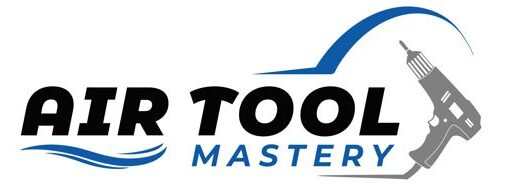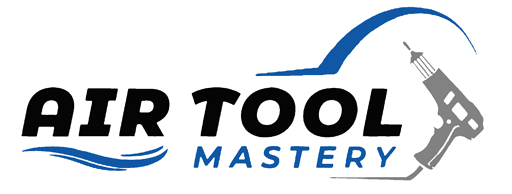Pneumatic drills, often known as air drills, are powerful tools driven by compressed air. They are characterized by their mechanical simplicity, reliability, and high power-to-weight ratio, which makes them an essential tool in numerous industries.
A pneumatic drill is commonly used in the construction, mining, and manufacturing sectors. In construction, they expedite the process of drilling through concrete, stone, and other hard materials, significantly reducing manual labor and time. The mining industry leverages pneumatic impact drills for excavation and extraction operations, where they are known for their performance in harsh conditions.
In the manufacturing sector, they are utilized for precise, high-speed drilling in assembly lines. Given their versatility and efficiency, pneumatic drills have secured a vital place in modern industry.
The Working Principles of Pneumatic Drills
Pneumatic drills, or air drills, function on a simple yet powerful principle: the transfer of energy from compressed air to mechanical motion. Imagine a bicycle pump. When you push down on the pump, the air gets squeezed and wants to escape. This concept is similar to how pneumatic drills work, but in a more controlled way.
When connected to an air compressor, the drill receives a stream of high-pressure air. This air travels into a chamber in the drill, where it pushes against a piston. The force of the air causes the piston to move back and forth rapidly. This piston, in turn, converts the air pressure into mechanical motion, which spins the drill bit. This rotational force is what we harness to drill through hard materials.
Components of a Pneumatic Drill
Let’s break down the major elements that make up a pneumatic drill:
Air Compressor: This device is responsible for creating the high-pressure air that powers the drill. It sucks in atmospheric air, squeezes (or compresses) it, and then delivers it to the drill through a hose.
Trigger: This is the part you squeeze to operate the drill. When you press the trigger, it opens a valve that allows the high-pressure air into the drill.
Air Chamber and Piston: The chamber houses the piston. When high-pressure air enters the chamber, it pushes the piston back and forth.
Rotor and Gears: The piston’s motion is converted into rotational motion by a mechanism known as a rotor. The rotor is connected to a set of gears, which control the speed and torque of the drill bit.
Drill Bit: This is the part that does the actual drilling. Drill bits come in different shapes and sizes for various materials and tasks.
Exhaust: This is where the used air exits the drill. Usually, it’s just a small hole or vent on the drill body.
Types of Pneumatic Drills
Pneumatic drills come in various sizes and types, each suited for different applications.
Hand-held Pneumatic Drill: This is the most common type of pneumatic drill. It’s small, lightweight, and has a pistol grip handle for easy operation. These are commonly used in construction and woodworking.
Jackhammers/Breakers: Conventional Pneumatic drill jackhammers are larger and heavier than hand-held ones and are used for heavy-duty tasks like breaking through concrete or rock. Pneumatic drill jackhammers are used for heavier-duty requirements.
Pneumatic hammer drills: These drills are designed to hammer into surfaces, similar to a hammer drill but powered by compressed air instead of electricity. They’re commonly used in mining and tunneling.
Pneumatic Screwdrivers and Wrenches: These drills are designed for precision work, like assembling machinery or tightening screws. They have a lower torque and higher speed than other types of pneumatic drills.
Pneumatic Grinders: These drills use small rotating discs to grind, polish, or shape materials. They’re commonly used in metalworking and automotive repair.
Advantages of Pneumatic Rock Drills
Pneumatic drills have several advantages over other types of drills:
Power and Speed: Pneumatic drills have a high power-to-weight ratio, making them powerful yet lightweight. They also have controllable speed, allowing for more precise drilling.
Versatility: With different types of drill bits available and the ability to control speed and torque, pneumatic drills can be used for a wide range of applications.
Durability: Pneumatic drills are built to withstand tough working conditions, making them ideal for use in construction and industrial settings.
Cost-effective: Pneumatic drills are generally more affordable than other types of drills, making them accessible to both professionals and DIY enthusiasts.
Safety Precautions When Using Pneumatic Impact Drills
While pneumatic drills offer many benefits, taking proper safety precautions when using them is important. Here are a few tips to keep in mind:
Wear protective Gear: Always wear earplugs and safety glasses when operating a pneumatic drill. The high noise level and flying debris can cause damage to your ears and eyes.
drill,Check for leaks: Before using a pneumatic drill, check all connections for air leaks. A leak can cause loss of power or even result in the tool exploding.
Properly Secure Material: Make sure the material you’re drilling into is properly secured before starting the drill. This will prevent it from moving and causing accidents.
Use the Right Drill Bit: Using an incorrect or dull drill bit can cause the drill to kickback, potentially causing injuries. Always use the correct type of bit for the material you’re drilling into and replace dull bits immediately.
Do Not Overexert: Pneumatic drills are powerful tools, but it’s important not to overexert them. If the drill begins to vibrate excessively or makes unusual noises, stop using it and check for any issues.
Take Breaks: Pneumatic drills can be heavy and tiring to use. Make sure to take regular breaks to prevent fatigue and maintain focus while operating the tool.
Choosing the Right Pneumatic Drill
When it comes to pneumatic drilling, there are various types and sizes available. Choosing the right one depends on the job at hand. Here are some factors to consider before purchasing a pneumatic drill:
Type of Work: Different types of pneumatic drills are designed for specific tasks. Consider what type of work you’ll be doing most often and choose a drill that is suitable for that type of work.
Power and Speed: The power and speed of a pneumatic drill are important factors to consider. A more powerful drill will be able to handle tougher materials, while a higher speed can increase productivity.
Handle Design: Pneumatic drills come with different handle designs such as pistol grip, inline, or D-handle. Consider which handle design will be the most comfortable and efficient for you to use.
Weight: Pneumatic drills can vary in weight, with some being heavier than others. It’s important to choose a drill that is comfortable for you to handle, especially if you’ll be using it for extended periods.
How to Operate a Pneumatic Drill
Before you start using a pneumatic drill, ensure you’re wearing the correct safety equipment. This includes safety glasses, ear protection, and sturdy gloves. Once you’re prepared, follow these steps:
Connect the Drill to the Air Compressor: Attach the pneumatic drill to an air compressor. Make sure the connection is secure to avoid any air leaks.
Select the Right Drill Bit: Depending on the task at hand, choose the appropriate drill bit. Attach it firmly to the drill.
Set the Correct Pressure: The air pressure needed for the drill to operate optimally will depend on the specific model. Refer to the user manual to determine the correct pressure.
Position the Drill: Position the drill bit at the spot where you want to drill. Ensure that the drill is perpendicular to the surface for a straight hole.
Start Drilling: Apply gentle pressure and activate the drill. Maintain a steady pressure to avoid overheating and damaging the drill bit.
Deactivate the Drill: Once you’ve finished drilling, release the trigger to stop the drill. Wait for the drill bit to stop spinning before setting the drill down.
Conclusion
A pneumatic drill is commonly used to make drilling tasks easier and more efficient. By choosing the right handle design, and weight, and following proper operating procedures, you can ensure a comfortable and safe experience while using a pneumatic drill. Always refer to the user manual for specific instructions and safety precautions before using any power tool.
With proper handling and maintenance, your pneumatic drill will serve you well for years to come. Remember to always wear the necessary safety equipment and follow proper procedures to reduce the risk of accidents and injuries while using a pneumatic drill.

